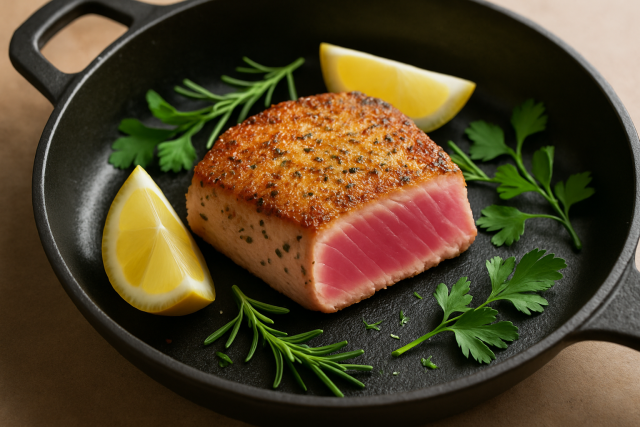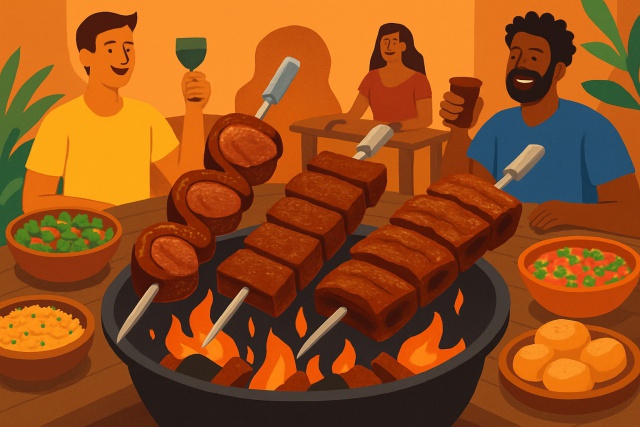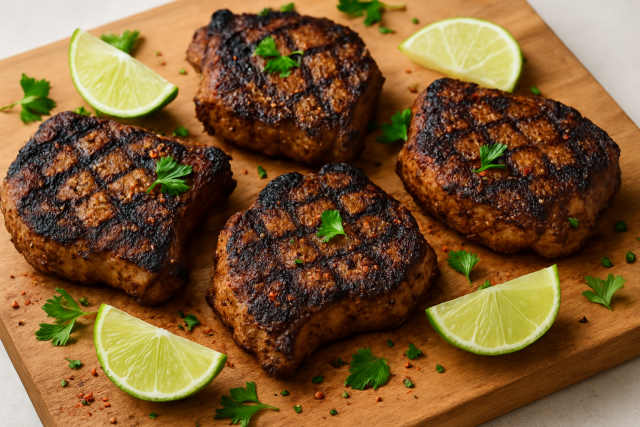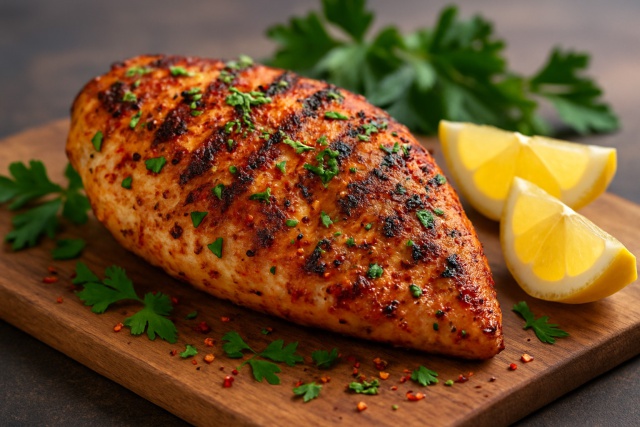How to Make Jamaican Ginger Beer with Fresh Ingredients
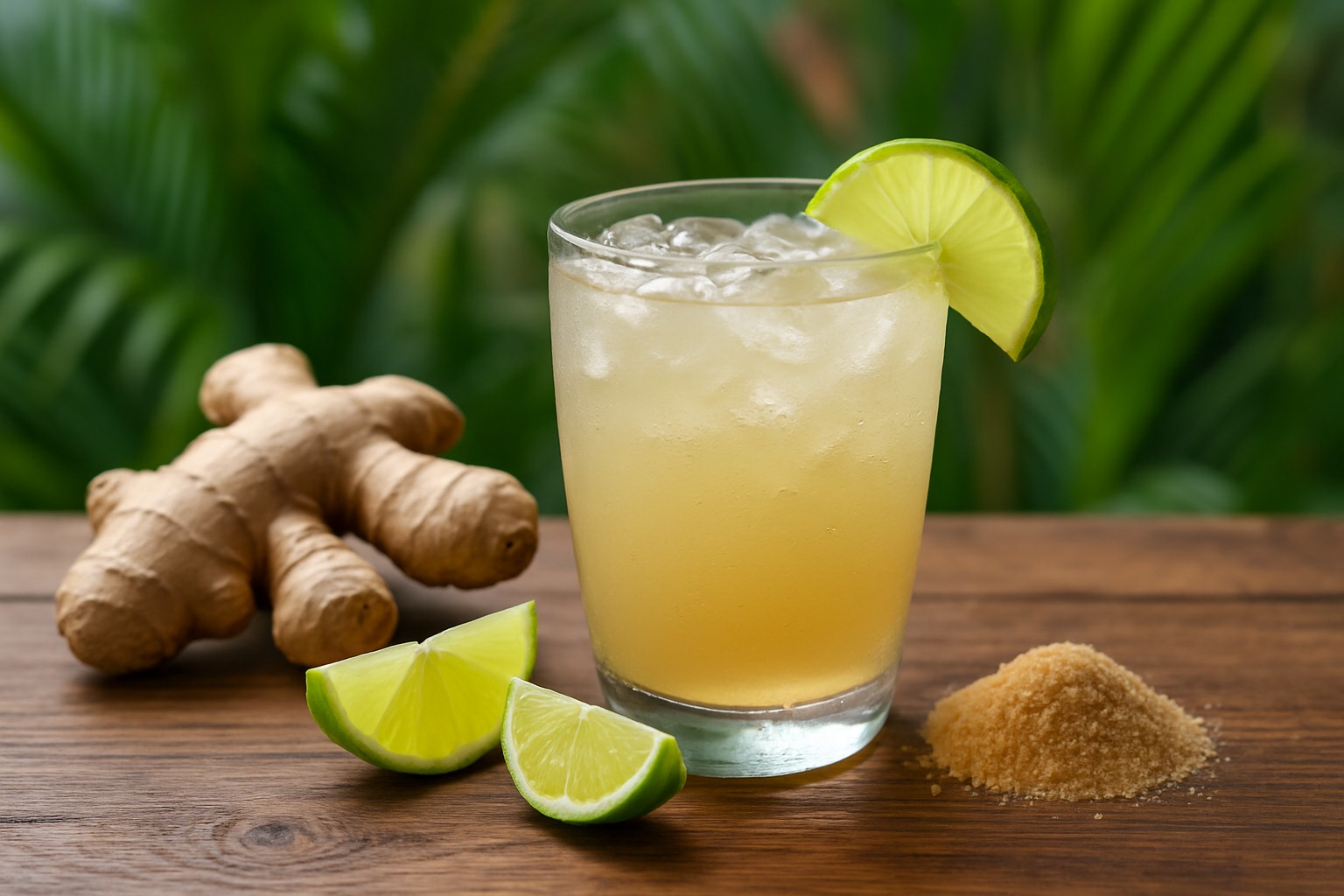
Jamaican ginger beer is a lively naturally fermented drink that holds a special place in Jamaican culture. Crafted from fresh zesty ingredients like ginger root and lime it boasts a distinctively spicy kick and a refreshing finish that is hard to forget.
So, What Exactly Is Jamaican Ginger Beer?
Jamaican ginger beer is a traditionally fermented drink that can be non-alcoholic or just a touch boozy and is crafted mainly from fresh ginger root, sugar and water. Unlike commercial sodas that rely on artificial flavors and forced fizz, authentic Jamaican ginger beer takes the slow route with natural fermentation using yeast. This process gives it a lively tangy spice and a natural sparkle you cannot fake. The bold sharp heat of ginger plays off bright citrus notes and subtle sweetness, making it stand out from softer cousins like ginger ales or milder ginger beers.
Essential Fresh Ingredients You Should Always Keep on Hand
Jamaican ginger beer truly relies on fresh ingredients to bring out its best. Fresh ginger root delivers that unmistakable spicy kick along with a fragrant aroma that just wakes up your senses. Lime juice adds a bright citrus tang, perfectly balancing out the sweetness and giving the fermentation a lively lift. Sugar acts as the yeast’s favorite meal, sparking natural bubbles while smoothing out the flavors. Active dry yeast kicks off the fermentation, creating that lovely fizz and a subtle tang that’s just right.
| Ingredient | Quantity | Purpose in Recipe |
|---|---|---|
| Fresh Ginger Root | 1 to 1.5 cups, grated | The star of the show—adds a spicy kick and sparks the fermentation magic |
| Lime Juice | 1/4 cup (freshly squeezed) | Brings a zesty brightness and tang that balances out the sweetness just right |
| Sugar | 1 to 2 cups (white or brown) | Gives the yeast something to feast on, bubbling up that lovely fizz and sweetening the mix |
| Active Dry Yeast | 1/4 to 1/2 teaspoon | The little helper that jumpstarts fermentation and fills your drink with bubbles |
| Water | 4 to 5 quarts | The trusty base that holds everything together, making sure it’s perfectly drinkable |
| Optional Spices | 1/2 teaspoon (cinnamon, nutmeg) | Adds a cozy warmth and subtle depth, like a gentle hug in every sip |
Tips for Equipment and Preparation That Actually Make a Difference
Making Jamaican ginger beer usually calls for a handful of key kitchen tools and containers you might already have. A large fermentation jug or a food-grade plastic container works well and helps keep fermentation under control. When it is time to separate solids from liquid, strainers or cheesecloth come in handy. For secondary fermentation and storage, bottles designed to hold carbonation like classic glass swing-tops or sturdy plastic soda bottles are your best bet to keep things safe.
- A fine grater or microplane is your best friend for zesting and grating fresh ginger without breaking a sweat
- Grab a large mixing bowl or pot to toss your ingredients together. It is better to have extra room than a crowded mess
- When fermenting, use a food-grade fermentation jug or a roomy plastic container with a lid because you will thank yourself later
- A fine mesh strainer or cheesecloth works wonders to catch pesky solids and keep your liquid smooth
- Bottles with airtight seals like swing-top glass ones or thoroughly cleaned plastic soda bottles are perfect for storing your delicious results
- A funnel is a small but mighty hero that makes pouring liquid into bottles a breeze and keeps the kitchen tidy
- A food thermometer isn’t just fancy. It’s the key to keeping your fermentation at the right temperature for success
- Don’t forget to sterilize all your gear and bottles with a sanitizer solution or clean hot water since a little prep goes a long way
Step-by-Step Guide to Crafting Authentic Jamaican Ginger Beer
Wash and peel fresh ginger root then grate about 1 to 1.5 cups to coax out all those zesty flavors.
In a large bowl combine the grated ginger with 4 to 5 quarts of water and stir to mix.
Add 1 to 2 cups of sugar depending on how sweet you like it and stir until the sugar completely disappears—no crunchy surprises here.
Pour in about 1/4 cup of fresh lime juice and mix thoroughly to brighten things up.
Sprinkle 1/4 to 1/2 teaspoon of active dry yeast over the mixture and gently stir to get everything acquainted.
Loosely cover your fermentation jug with a cloth or lid then leave it at room temperature for 24 to 48 hours where the magic of fermentation kicks in.
After that initial fermentation period strain the liquid through a fine mesh or cheesecloth to catch all those ginger bits.
Using a funnel pour the strained ginger beer into clean airtight bottles making sure to leave a bit of headspace at the top.
Seal the bottles tightly and let them hang out at room temperature for another 24 to 48 hours to build up that naturally fizzy carbonation.
Once your drink is nicely bubbly pop the bottles into the fridge to stop fermentation and chill them down—perfect for serving up a refreshing treat.
The first fermentation typically runs anywhere from 24 to 48 hours depending on how warm the room feels. Warmer temps speed things up a bit. When it comes to the secondary fermentation in bottles, expect a similar timeframe of about 24 to 48 hours to hit that sweet spot of carbonation. Don’t let things go too far or you might end up with more alcohol than you bargained for or, worse, bottles that burst spectacularly. It’s best to keep fermentation cozy but not too hot. If you’re feeling cautious, regularly ease off some pressure by gently releasing gas from bottles sporting crowns or caps.
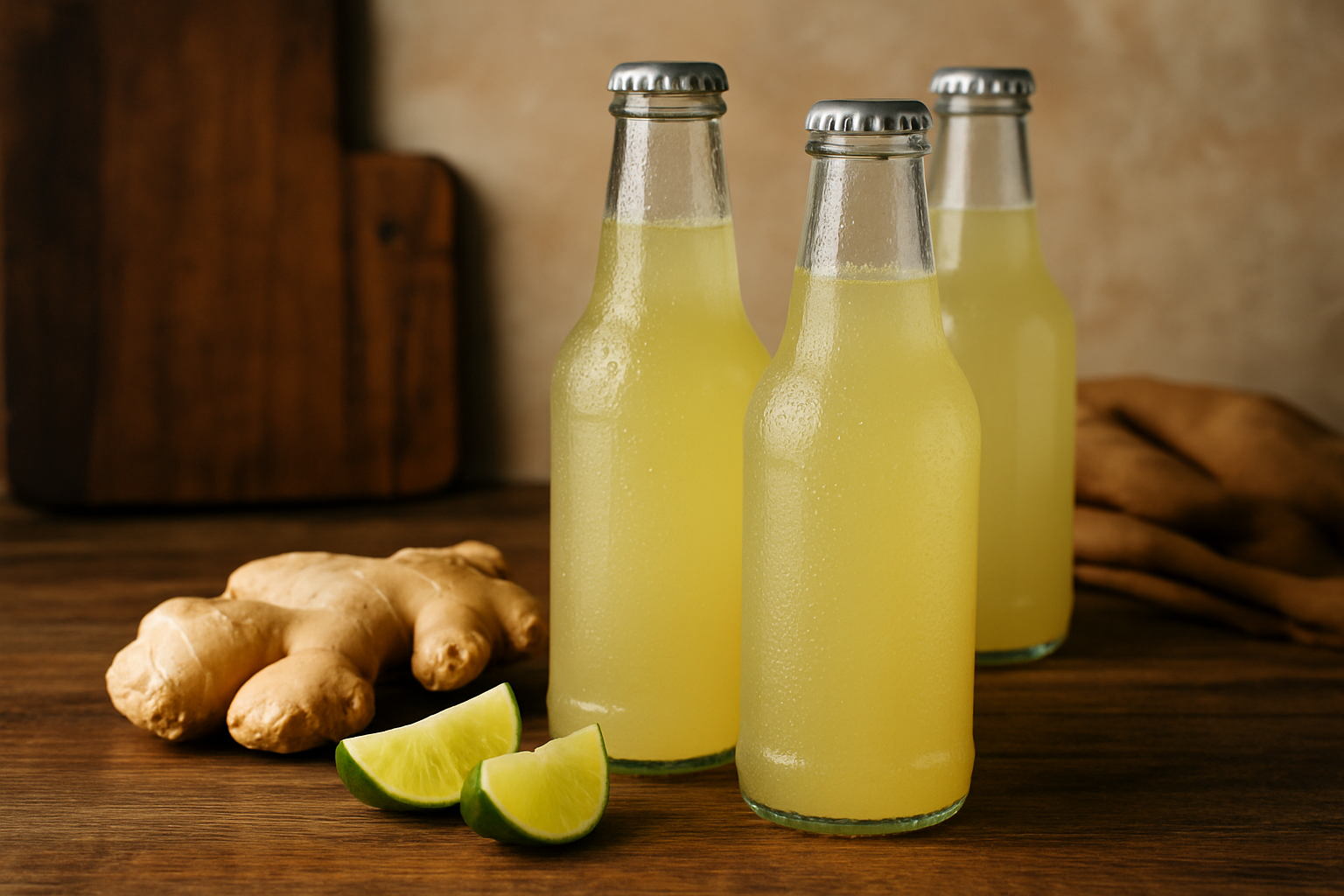
Bottles of freshly made Jamaican ginger beer with fresh ginger roots and lime wedges ready to serve.
Tips to Help You Troubleshoot and Jazz Up Your Ginger Beer
- If your ginger beer ends up tasting flat, double-check that you used active yeast and gave it enough time to work its magic during secondary fermentation. Sometimes patience really pays off.
- On the flip side, letting it ferment too long can lead to harsh alcoholic notes or fizz that’s too lively for your bottles to handle. Next time, try putting it in the fridge earlier and see if that helps.
- Keep bottle explosions from turning your kitchen into a science experiment by using plastic bottles during fermentation. If you prefer the classic glass, make sure to 'burp' them daily to safely release built-up pressure.
- Play around with sugar levels to nail your ideal taste. Less sugar means a drier, tangier sip while more sugar increases sweetness and fizz. It’s like finding the sweet spot where your taste buds do a happy dance.
- Amp up the flavor by adding spices like cinnamon sticks, freshly grated nutmeg or a zingy hit of lime zest during the boiling stage. This adds a nice twist that wakes up the whole batch.
- Always pick fresh young ginger root for that punchy, vibrant kick and avoid old woody ones that often fall flat and lack zing.
- Don’t skimp on sanitizing your gear because keeping everything spotless is key to avoiding pesky bacteria that could ruin the flavor or cause safety issues.
Patience is absolutely key when it comes to fermenting Jamaican ginger beer. You really have to let the sweetness and fizz work their magic at their own pace—trying to rush it usually backfires. From my experience, giving it time pays off big, bringing out that genuine depth and the confident little kick that makes each sip worth savoring.– Experienced Caribbean Brewer
How to Store and Serve Your Jamaican Ginger Beer Like a Pro
Once your ginger beer hits that perfect bubble party, pop it into the fridge to keep it from going wild and fermenting any further. This final step in how to make Jamaican ginger beer ensures the absolute best refreshing sip—serve it nice and chilled at about 40°F, as it makes all the difference.


